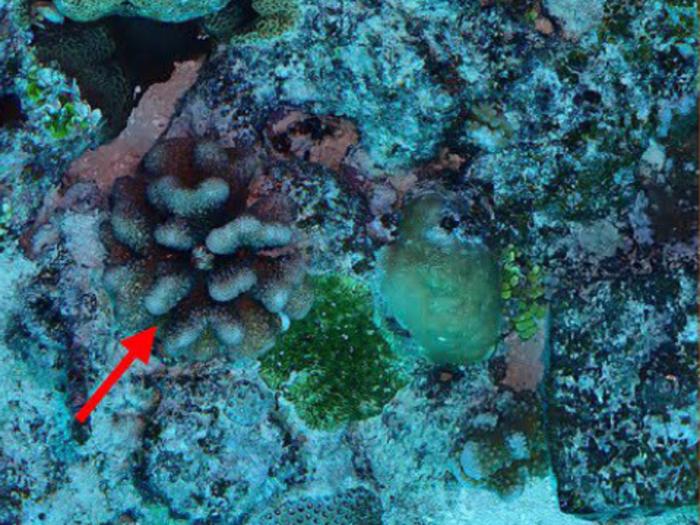In an ambitious effort to deepen the scientific community’s understanding of ecological dynamics, the Ecological Society of America (ESA) has curated a compelling collection of recent studies published across its spectrum of leading ecological journals. These groundbreaking investigations traverse a diverse array of ecosystems and species, providing novel insights into plant colonization, urban biodiversity, cryptic species differentiation, animal monitoring techniques, and freshwater ecosystem restoration. Together, they weave a narrative on how ecological complexities shape the resilience and vulnerability of natural systems under mounting anthropogenic pressures.
Central to the discourse on invasive species is a fascinating study leveraging historical nursery catalogues dating back over a century in New Zealand. By retrospectively analyzing data on ornamental plants introduced since the 1860s, researchers sought to unravel the enigmatic drivers behind why some species naturalize successfully while others remain confined to cultivation. Their analysis revealed that attributes such as plant stature, relative market availability, and historical global establishment frequencies serve as reliable indicators of naturalization likelihood. Conversely, traits like cold tolerance and shade adaptability exerted secondary influence. Importantly, the study highlighted the intricate interplay between inherent species traits and localized environmental variables in mediating invasiveness, underscoring the challenges of predicting landscape-scale spread and offering a novel historical lens for invasive species risk assessment.
Urban ecosystems, often dismissed as ecological deserts, reveal surprising complexities in a study focused on monarch butterflies in Northern California. These once migratory insects have adapted to overwinter in urban gardens, raising ecological questions about habitat quality and population sustainability. Contrary to concerns that urban settings might function as ecological traps luring monarchs away from their migratory traditions, systematic monthly surveys demonstrated the existence of self-sustaining, nonmigratory monarch populations thriving year-round. Metrics of abundance, parasite prevalence, and predation rates converged to suggest that urban garden habitats constitute critical refuges, potentially buffering monarch populations against climate-induced habitat shifts. This research challenges prevailing paradigms about habitat suitability and emphasizes the conservation value embedded within anthropogenic landscapes.
.adsslot_G0Uxt3u4e2{width:728px !important;height:90px !important;}
@media(max-width:1199px){ .adsslot_G0Uxt3u4e2{width:468px !important;height:60px !important;}
}
@media(max-width:767px){ .adsslot_G0Uxt3u4e2{width:320px !important;height:50px !important;}
}
ADVERTISEMENT
Delving beneath superficial similarities, an experimental investigation into the ecological behavior of five cryptic stony coral species (commonly termed cauliflower corals) around French Polynesia revealed that genetic likeness does not equate to ecological equivalence. Despite their near-identical morphology, these species displayed markedly different responses to biotic and abiotic stressors, including nutrient influx, consumer pressures from reef grazers, and post-cyclone recolonization dynamics. Some species exhibited robust resilience, rapidly recolonizing damaged reefs and withstanding nutrient pollution, whereas others demonstrated heightened vulnerability. These interspecific differences not only influence community composition and trophic interactions but also have profound implications for reef restoration efforts given the selective susceptibilities under future oceanic scenarios marked by climate change and increased anthropogenic disturbance.
The often-overlooked role of fauna in ecosystem health assessments gained renewed attention through advancements in monitoring technologies. A comprehensive review emphasized that while vegetation-centric evaluations dominate ecosystem assessments, the integration of animal community metrics remains scant, particularly in terrestrial biomes such as forests and alpine zones. Novel tools including drones, camera traps, acoustic sensors, and environmental DNA sequencing have revolutionized data acquisition, enabling unprecedented granularity in understanding animal diets, spatial usage, and community dynamics. Case studies, such as bird metrics in the Brazilian Atlantic Forest, demonstrated superior sensitivity in detecting anthropogenic disturbances compared to traditional ecological indicators. This shift towards “functionalizing” ecological integrity promises more nuanced management strategies attuned to complex biotic interactions.
The fragmentation of freshwater ecosystems, largely driven by river barriers like dams and weirs, presents a critical conservation challenge that scientists are striving to address. In Australia’s largest watershed, investigators mapped the relationship between barrier characteristics and fish movement restrictions. Their findings emphasized that the height, density, and precise locations of these obstructions critically modulate passage success, disproportionately affecting sedentary species with limited mobility. Seasonal low water levels exacerbated these limitations, highlighting the need for tailored mitigation structures such as species-specific fish ladders. With restoration funding constrained globally, prioritizing interventions based on barrier impacts and target species ecology offers a strategic pathway to reinstate connectivity and promote freshwater biodiversity resilience.
Collectively, these studies underscore the dynamism and intricacy inherent in ecosystems facing multifaceted global changes. They reflect a paradigm shift towards integrative ecological research that melds historical data analysis, urban ecology, cryptic species differentiation, technological innovation in monitoring, and ecosystem restoration science. The implications stretch beyond academic curiosity, offering actionable knowledge for conservationists, policymakers, and resource managers endeavoring to safeguard biodiversity and ecosystem services amid accelerating environmental change.
The historical plant invasion study exemplifies how paleoecological and archival resources can illuminate contemporary ecological challenges, bridging temporal scales to inform invasive species management. Urban monarch research reveals that adaptive species behaviors and habitat heterogeneity in anthropogenic environments may defy simplistic conservation narratives, encouraging urban ecological stewardship. Cryptic coral assessments highlight the necessity of species-specific approaches in reef resilience modeling and restoration prioritization, especially in light of differing species’ susceptibilities to common stressors.
Advancements in animal monitoring technology not only refine ecosystem assessments but also herald a more function-centric ecological framework that appreciates animal community roles in ecosystem functionality and resilience. The freshwater fish fragmentation study pragmatically advises restoration strategies optimized by species traits and barrier features, evidencing the value of tailored solutions in ecosystem repair.
These collective advances reflect an ecological research agenda increasingly intertwined with real-world conservation imperatives, advocating for nuanced, data-driven policies that embrace ecological complexity and variability. The body of work showcased by the ESA journals contributes a rich, multifaceted blueprint for understanding and managing ecosystems during an era defined by biodiversity loss and environmental uncertainty. It highlights the urgent need for interdisciplinary collaboration and innovative methodologies in responding to global ecological crises.
For ecologists and conservation practitioners alike, these insights ignite fresh perspectives on ecosystem resilience, species interactions, and the hidden variables influencing ecological trajectories. They reaffirm the critical importance of continued research investments, technological integration, and historical context in unraveling the complex tapestry of life on Earth. As the ecological community mobilizes around these findings, the hope is that science-driven initiatives will effectively safeguard the integrity of ecosystems for generations to come.
Subject of Research: Ecology, Invasive Species, Urban Ecosystems, Cryptic Species, Animal Monitoring, Freshwater Fish Restoration
Article Title: ESA Highlights Five Pioneering Studies Illuminating Complex Ecological Dynamics
News Publication Date: Not specified
Web References:
Historical frequency of plants in nursery catalogues predicts likelihood of naturalization in ornamental species: https://esajournals.onlinelibrary.wiley.com/doi/10.1002/eap.70023
Neither source nor trap: Urban gardens as habitat for nonmigratory monarch butterflies in Northern California: https://esajournals.onlinelibrary.wiley.com/doi/10.1002/ecs2.70259
Differential effects of nutrients and consumer pressure on sympatric cryptic coral species (Pocillopora spp.): https://esajournals.onlinelibrary.wiley.com/doi/10.1002/ecy.70079
Functionalizing ecological integrity: using functional ecology to monitor animal communities: https://esajournals.onlinelibrary.wiley.com/doi/10.1002/fee.2852
Barrier features, fish traits, and river flows drive fragmentation of freshwater fish: https://esajournals.onlinelibrary.wiley.com/doi/full/10.1002/ecm.70014
Image Credits: Thomas C. Adam
Keywords: Ecology, Invasive Species, Urban Ecology, Coral Ecology, Animal Monitoring, Freshwater Fish Fragmentation, Biodiversity, Conservation Ecology, Ecological Restoration
Tags: animal monitoring methodologiesanthropogenic pressures on ecosystemscryptic species differentiation researchecological dynamics researchecological resilience and vulnerabilityfreshwater ecosystem restoration techniqueshistorical nursery catalogues in ecologyinvasive species analysislandscape-scale spread predictionsplant colonization dynamicsspecies traits and naturalizationurban biodiversity studies





